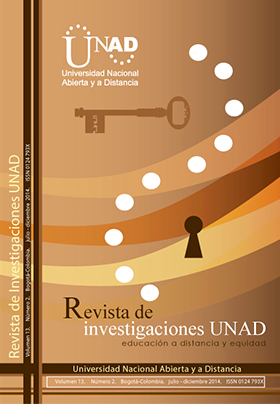Cuando la REVISTA DE INVESTIGACIONES UNAD recibe la postulación de un original por parte de su autor, ya sea a través de correo electrónico o postal, considera que puede publicarse en formatos físicos y/o electrónicos y facilitar su inclusión en bases de datos, hemerotecas y demás sistemas y procesos de indexación. REVISTA DE INVESTIGACIONES UNAD autoriza la reproducción y citación del material de la revista, siempre y cuando se indique de manera explícita el nombre de la revista, los autores, el título del artículo, volumen, número y páginas. Las ideas y conceptos expresados en los artículos son responsabilidad de los autores y en ningún caso reflejan las políticas institucionales de la UNAD
M-learning and augmented reality, built to support the teaching of computing technologies
The mobile devices are more commons in our society, because today across this is possible to make several works such as: check emails, read journals, check the weather, etc.
In this article presents the development of a mobile platform whit augmented reality for the support the learning and teaching process of the calculus. This, it allows solving exercises such as: limits, derivates and integrals, consulting the contents of the subject of calculus: diferential, integral and several variables illustrated with examples and exercises proposed. Also, incorporate multimedia contents using augmented reality, with this is possible appreciate
graphics representations of tridimensional functions.
In a nearby future the mobile platform whit augmented reality can be used such as technological tool for the contribution in the understanding of concepts in the subject of calculus




